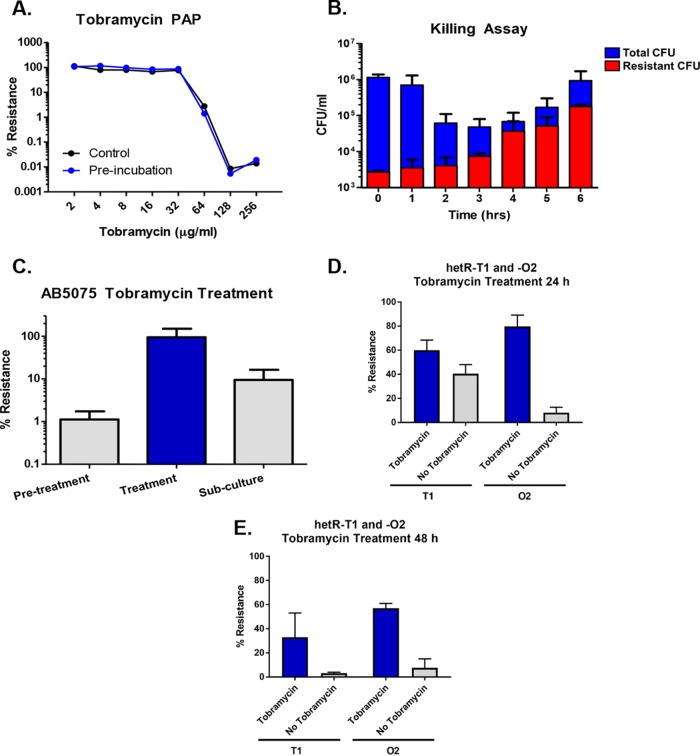FIG 2 .
Characterization of tobramycin heteroresistance in AB5075. (A) Preincubation of AB5075 with a subinhibitory concentration of tobramycin had no effect on the population analysis profile (PAP) for this strain, indicating that increased resistance is not induced by exposure to this drug. (B) Incubation of AB5075 in liquid culture with 64 µg/ml of tobramycin resulted in killing of the majority of the population, while the CFU of the tobramycin-resistant subpopulation continued to increase. This indicates that the tobramycin-resistant subpopulation is distinct from persisters, which would be unable to replicate in the presence of drug. (C) Increased tobramycin resistance is unstable in liquid cultures. Following exposure of AB5075 to 64 µg/ml tobramycin, the majority of the surviving population exhibited increased tobramycin resistance. However, when tobramycin selection was removed, most of the cells in the population lost their increased resistance. (D) Twenty-four-hour stability of the tobramycin resistance phenotype in colonies was examined using stocks of hetR-O2 and hetR-T1. Colonies were plated from stock onto plates supplemented with tobramycin. Individual colonies were picked and passaged onto plates with 40 µg/ml tobramycin or with no tobramycin. After 24 h of growth, individual colonies were resuspended and the percentages of resistant cells within each colony were determined. Data represent the means and standard errors of means for four (hetR-T1) or three (hetR-O2) independent replicates. (E) Forty-eight-hour stability of the tobramycin resistance phenotype was assessed for stocks of hetR-O2 and hetR-T1. The experiment was performed as described for panel D but with colonies incubated on plates with and without 40 µg/ml of tobramycin for 48 h. Data represent the means and standard errors of means for two independent replicates.

